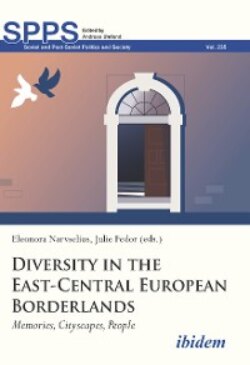Читать книгу Diversity in the East-Central European Borderlands - Группа авторов - Страница 18
На сайте Литреса книга снята с продажи.
Chişinău in Post-Soviet Moldova
ОглавлениеAfter 1991, socialist urban planning was partly replaced by anarchy and uncoordinated building projects that gave priority to economic interests, often at the expense of old architecture. However, an opinion has subsequently emerged for preservation of old buildings and restoration of the Old Town on a human scale. By the 560th anniversary of Chişinău in 1996, V. Lupaşcu wrote in the review Literatura şi Arta:
The Old Town, the so-called “lower city,” which was formed in the 17th–18th centuries, had an undeniably typical Moldovan character—with crooked, narrow streets and very different houses surrounded by gardens […] it is necessary to return to and keep our national architecture, including the pre-Russian architecture of Chişinău. Little remains of it, but all the more reason to carefully preserve what we have left. We believe that it is possible to regenerate the medieval part of the city […] The absence of the major focus of the old city—the Old Cathedral—can raise the question of its return (Lupaşcu 1996: 8).
The Moldovan contribution to Heritage at Risk. ICOMOS World Report 2006/2007 on Architectural Monuments and Sites in Danger underlined that in 1993 the historical city center was officially declared an architectural and historical monument of national importance, including many listed buildings.38 In 2010, a Black Book (Ştefaniţa 2010) presented 75 demolished and 49 degraded architectural monuments in Chişinău. Of crucial importance for preserving architectural heritage in Chişinău is the huge inventory of historical buildings produced in 2010 (Gangal, Nesterov, et. al. 2010). A question is whether the simpler buildings in the Old Town will also be regarded as cultural heritage.
From 2011, a series of symposia entitled “Chişinău Identities” (Identităţile Chişinăului) have been arranged by academics and activists, also acknowledged and supported by national and municipal cultural bodies.39 The growing opposition towards the new thoroughfare and the continued demolition of old buildings still meets resistance from construction and financial interests and parts of the national and local government. Foreign-assisted Jewish organizations have begun to collect and disseminate knowledge about the Jewish heritage. A map of this heritage has been published and a small Jewish museum has been opened.
